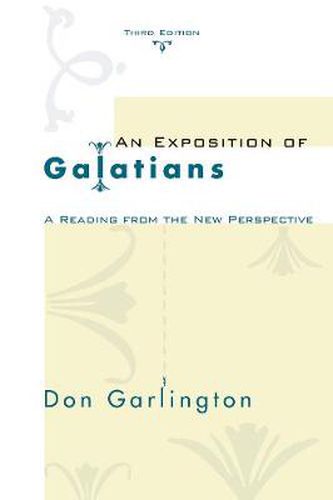Readings Newsletter
Become a Readings Member to make your shopping experience even easier.
Sign in or sign up for free!
You’re not far away from qualifying for FREE standard shipping within Australia
You’ve qualified for FREE standard shipping within Australia
The cart is loading…






This title is printed to order. This book may have been self-published. If so, we cannot guarantee the quality of the content. In the main most books will have gone through the editing process however some may not. We therefore suggest that you be aware of this before ordering this book. If in doubt check either the author or publisher’s details as we are unable to accept any returns unless they are faulty. Please contact us if you have any questions.
The present commentary seeks to be a kind of halfway house between highly technical and popular treatments of Galatians. Its purpose is to make the exposition as user-friendly as possible with only as many technicalities as necessary to accomplish that end. The emphasis of the work is decidedly theological, with attention focused on the salvation historical argument of Paul’s letter. Its main target audience includes pastors, students, and Pauline scholars. The exposition assumes a modified form of the
New Perspective
on Paul and Second Temple Judaism as its framework of interpretation, and for this reason a premium has been placed on the letter’s historical context as attested by the literature of Second Temple Judaism as well as the Greco-Roman environment. However, far from being inimical to the foundational concerns of the Reformation, this reading of the Galatian letter is fully supportive of the great mottoes of the Reformers themselves: Sola Scriptura, Sola Fide, and especially Solus Christus, and all the more as the present work endeavors to honor an oft-neglected slogan of the Reformation, Ad Fontes (to the sources). The previous subtitle, A New Perspective/Reformational Reading, has now been changed to A Reading from the New Perspective in order to underscore the author’s appreciation of what has been learned from such scholars as J. D. G. Dunn, N. T. Wright, and numerous others.
$9.00 standard shipping within Australia
FREE standard shipping within Australia for orders over $100.00
Express & International shipping calculated at checkout
This title is printed to order. This book may have been self-published. If so, we cannot guarantee the quality of the content. In the main most books will have gone through the editing process however some may not. We therefore suggest that you be aware of this before ordering this book. If in doubt check either the author or publisher’s details as we are unable to accept any returns unless they are faulty. Please contact us if you have any questions.
The present commentary seeks to be a kind of halfway house between highly technical and popular treatments of Galatians. Its purpose is to make the exposition as user-friendly as possible with only as many technicalities as necessary to accomplish that end. The emphasis of the work is decidedly theological, with attention focused on the salvation historical argument of Paul’s letter. Its main target audience includes pastors, students, and Pauline scholars. The exposition assumes a modified form of the
New Perspective
on Paul and Second Temple Judaism as its framework of interpretation, and for this reason a premium has been placed on the letter’s historical context as attested by the literature of Second Temple Judaism as well as the Greco-Roman environment. However, far from being inimical to the foundational concerns of the Reformation, this reading of the Galatian letter is fully supportive of the great mottoes of the Reformers themselves: Sola Scriptura, Sola Fide, and especially Solus Christus, and all the more as the present work endeavors to honor an oft-neglected slogan of the Reformation, Ad Fontes (to the sources). The previous subtitle, A New Perspective/Reformational Reading, has now been changed to A Reading from the New Perspective in order to underscore the author’s appreciation of what has been learned from such scholars as J. D. G. Dunn, N. T. Wright, and numerous others.